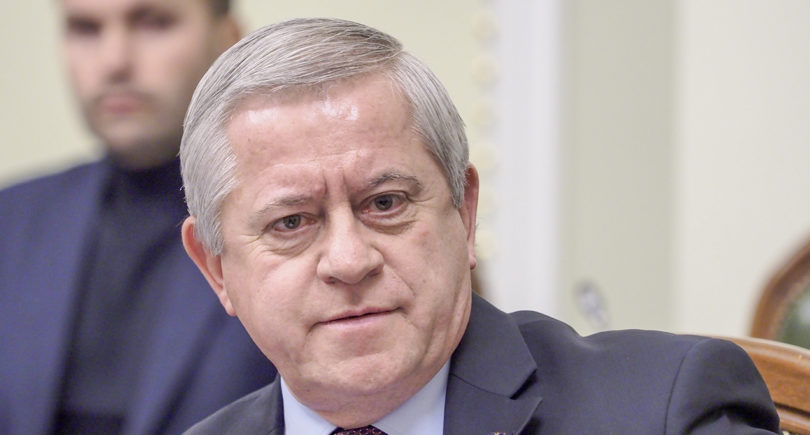
Opinions State war in Ukraine 1401 09 November 2023
The development of production requires state leadership in planning, state procurement, import substitution, stimulation of production and deregulation
Russia’s full-scale aggression against Ukraine revealed the real state of affairs in the domestic production of products necessary for the Armed Forces. In particular, Ukraine did not even have its own production of ammunition – shells and ammunition. The prolongation of hostilities raised the issue of transitioning the economy to a military mode. Ukrainian business, to the extent it could, independently engaged in the production of products necessary for the Armed Forces, but the list of products was significantly limited. For their part, during the first year of the war, state institutions showed little or no purposeful and coordinated action to stimulate and coordinate their own production of ammunition, weapons, and other necessary products. They relied on imports or military aid from their Western partners for everything they needed.
Military rails
The process of transitioning the economy to a war footing is too slow compared to the scale of the war. There is an ideological reason for this – the long-standing disdain for domestic producers that has been ingrained in the minds of officials. Life forces them to get rid of this manifestation of inferiority. Unfortunately, sobering up is now costing the country a lot.
The transition of the industry to a war footing requires government leadership: planning, government orders, import substitution, production incentives, and reasonable deregulation where it will increase production rather than imports. For a long time, such an active role of the state was recognized as inappropriate. We are reaping the benefits of this overshadowing both directly in the defense industry and in the form of a significant reduction in the share of manufacturing in GDP.
The public procurement policy is also not conducive to the development of production. For a long time, it has encouraged customers to buy imported goods, ignoring the fact that up to 40% of the funds from the purchase of Ukrainian goods are returned to the budget in taxes. The same officials are now continuing to buy foreign goods, depriving the country of a chance to develop its own production.
Next year’s budget allocates a fabulous UAH 1.6 trillion for defense. «Everything that can be produced in Ukraine should be produced in Ukraine,» Defense Minister Rustem Umerov said upon taking office. If these intentions are backed up by concrete actions, a policy of localization and priority for domestic producers, we will get both the army and the economy strengthened.
Problems of the military-industrial complex
An unprecedented mistake was the Cabinet of Ministers’ resolution that prohibited Ukrainian companies supplying the army from making a profit. It was recently amended and now it is possible to make a profit. But for the period from spring 2022 to summer 2023, profit was outlawed. In addition to being a blatant discrimination against domestic producers, this resolution has led to claims for billions of hryvnias against producers by the Ministry of Defense and the State Antimonopoly Service of Ukraine and demands to return profits on which income tax has already been paid. Without an immediate resolution, this situation will lead to an avalanche of lawsuits and a de facto blocking of the work of the Defense Forces’ suppliers.
Another problem is the inability of customers to plan. The procurement of uniforms is the best illustration. The Ukrainian light industry can sew everything the army needs – of high quality and at competitive prices. There is enough capacity in Ukraine to sew all the required volume with proper planning. If the delivery date for the uniforms is, say, October 1, then if we hold tenders in May, we can do everything in time and get the entire volume of Ukrainian production. But if we remember that winter is coming only in August, then it will not be possible to sew a million sets in a month. And then officials begin to talk about how there is no place to sew in Ukraine, so we need to buy abroad. The same is true for other types of defense logistics goods, such as buses, special vehicles, engineering equipment, etc.
The other side of the planning problem is the low ability of customers to establish cooperation with domestic manufacturers to master the production of new products – from spare parts and consumables to new models of equipment. This includes identifying manufacturers that have the necessary equipment and design staff, and developing technical specifications for products, as well as testing, acceptance and commissioning.
Positive examples
There is visible progress in drones thanks to the efforts of the Ministry of Digital Transformation. Also, in some areas, this work has finally begun to unfold under the management and coordination of the Ministry of Strategic Industry. In terms of our needs, we are still very far from self-sufficiency. Nevertheless, there are categories of products in which we produced more in a month this year than in the whole of the previous year. We have already heard complaints from civilian industry that their workers are being lured away by arms manufacturers.
Next year, defense production will continue to grow significantly. This will be facilitated by a change in the paradigm of thinking – I attribute this to the appointment of Oleksandr Kamyshyn as head of the Ministry of Strategic Industry, as well as to an increase in budget funding for the defense industry. Next year, funding for the development of the defense industry in the sphere of responsibility of the Ministry of Strategic Industry will increase sevenfold to UAH 55 billion. The main focus is declared to be domestic arms production: both at state defense enterprises and by private companies.






